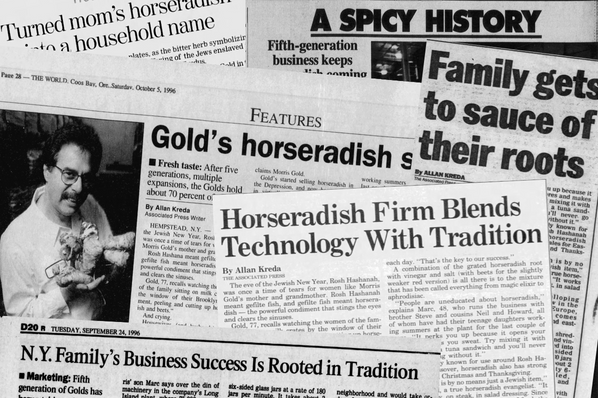When Matthew Knippen lost his running buddy to a cross-country move, the iOS developer made sure they could continue their healthy habit together: He built an app.

The app enabled him to track his running mate's speed and distance, and vice versa, allowing for some of the same motivation and encouragement that happens in person. The two enjoyed the experience so much that they wondered: What would happen if there were 10 of us?
So, along with his two co-founders, Kippen launched Charge Running in 2017, an app offering live running classes that users could take from any location.
The startup aimed to be the Peloton of running: There were ~20 live classes taught by 15 coaches each day, and users could run as much or as little as they'd like.
The founders launched with $50k raised from friends and family which took them from ideation to 100 active customers. Another $625k from an angel investment, $125k for winning Y Combinator's 2021 batch, and $400k from various other investors brought Charge a total of $1.15m to build out the app.
The app cost $30 a month for unlimited access to all classes, and at its peak had nearly 1.5k paying subscribers. The founders also brought in an additional revenue stream accounting for 50 percent of its revenue through B2B deals.
When the pandemic hit, companies wanted ways to continue their running events, whether for charities or employee bonding. They were willing to pay Charge Running to hold those events remotely with runners all over the world.
While the app started with good momentum, lack of funding led to a too-lean team, which slowed growth to a crawl and lost the startup some early adopters.
On Dec. 31, 2021, Knippen and one of his co-founders officially stepped away from the business (his third co-founder would keep up with the project for six more months before shuttering).
Below, Knippen shares the mistakes that led to Charge Running's downfall as well as the lessons he learned along the way.
Lesson 1: Follow your passion with like-minded founders.
Though he was a casual runner, Knippen says he was never passionate about running itself. He cites this as one of his fatal flaws: "I tried getting into running four or five times and never ultimately succeeded," he says.
Without a natural passion for the business, Knippen's commitment began decreasing as soon as he saw one co-founder leave for a new project.
He and his remaining co-founder who was also his sister had to steer the ship, which brought to light the importance of being in sync with your co-founders.
"Working with family can be difficult there's no way around that," he says. "Our team also had very different levels of experience when it came to starting, running, and keeping a company going."
Knippen recalls that their varied experience levels were a point of contention: Charge Running was not his first startup, while his co-founders were first-time entrepreneurs. This led to conflict among the team, often dividing the founders two against one.
Lesson 2: Never stop listening to the customer.
With Charge's first 100 users, Knippen was constantly iterating the product to respond to customers' feedback.
When the data showed that a high number of users would sign up for a live class but not attend Knippen and his team began formulating theories and testing solutions.
First, they hypothesized that users were unsure of when and how the class began when they opened the app. The founders redid the countdown screen and added instructions such as put on headphones and shoes, be ready at this time, we'll take care of the rest.
That change didn't move the needle, so the team tested another hypothesis: Users were forgetting about classes altogether. Knippen added push notifications that were sent out an hour, and then ten minutes, before a run started. Similarly, that change had no drastic effect on attendance.
However, when the team installed an automatic prompt that allowed users to add classes to their personal calendars, they saw a drastic increase in class attendance.
Knippen and his co-founders used this method of hypothesis testing over and over to solve for customer feedback as it came in: They sent an automated email asking for feedback to customers who completed one run but didn't come back for a second.
When the company began growing, Knippen said he and his team lost sight of their customers' needs, a major reason for the app's downfall. Without a larger team, there was no one dedicated to improving the product while the founders dealt with other business priorities.
"When we were smaller, we had the energy to focus on the numbers and improve the funnel," he says. "As the company grew, and we didn't have a product person, I could either fundraise for the business or build the product."
Lesson 3: Build a well-rounded team.
Knippen was CEO and the only developer building the app. It was a flawed plan, but he carried out both high-impact positions from necessity.
While the founders raised a substantial amount of capital, it wasn't enough to hire for multiple positions on the team, nor for each to take a normal salary. The founders were staring down the barrel of another 12 months without full-time salaries or the support they needed.
Knippen says if they'd had the funds to hire a full-time employee dedicated to growing the B2B business, they could've possibly brought in enough money to start expanding their team. Similarly, a full-time app developer would have freed Knippen's time and allowed him to focus on CEO responsibilities.
Being torn between two positions was more than just a stressor for Knippen; he says it ultimately was a major reason for the company's shortcomings.
When I was in development mode, we were shipping new features weekly and keeping things moving. But when I had to go into fundraising mode as CEO, we would release new things every three months.
This caused the team to build slower and ultimately lose some of their early adopters, who were unimpressed with the lag time in improvements and additions.
Other positions Knippen wishes he'd been able to hire for: marketing, social media, product (with a focus on business data), fundraising, and financial planning. This would have left the three co-founders less strapped for time, and freed them up to better perform in their own positions.
While Knippen knew it was the right decision to step away from Charge Running, it wasn't an easy one.
I have two kids now, but I didn't when I started and Charge was my baby, he recalls. To give it up was incredibly difficult.
His entrepreneurial drive, though, has not been dampened. Knippen says he plans on building another company in the future, though this time he won't do so unless it's something he's deeply passionate about.
As far as what that could be: Knippen says he has whiskey on the brain. He's mulling over the idea of an app, such as the ones that currently exist for rating and tracking wine and beer, for whiskey.
Want to share your own story of failure? Tell us about it here and you could be featured in The Hustle.
.jpg?width=48&height=48&name=IMG_2563%20(1).jpg)










